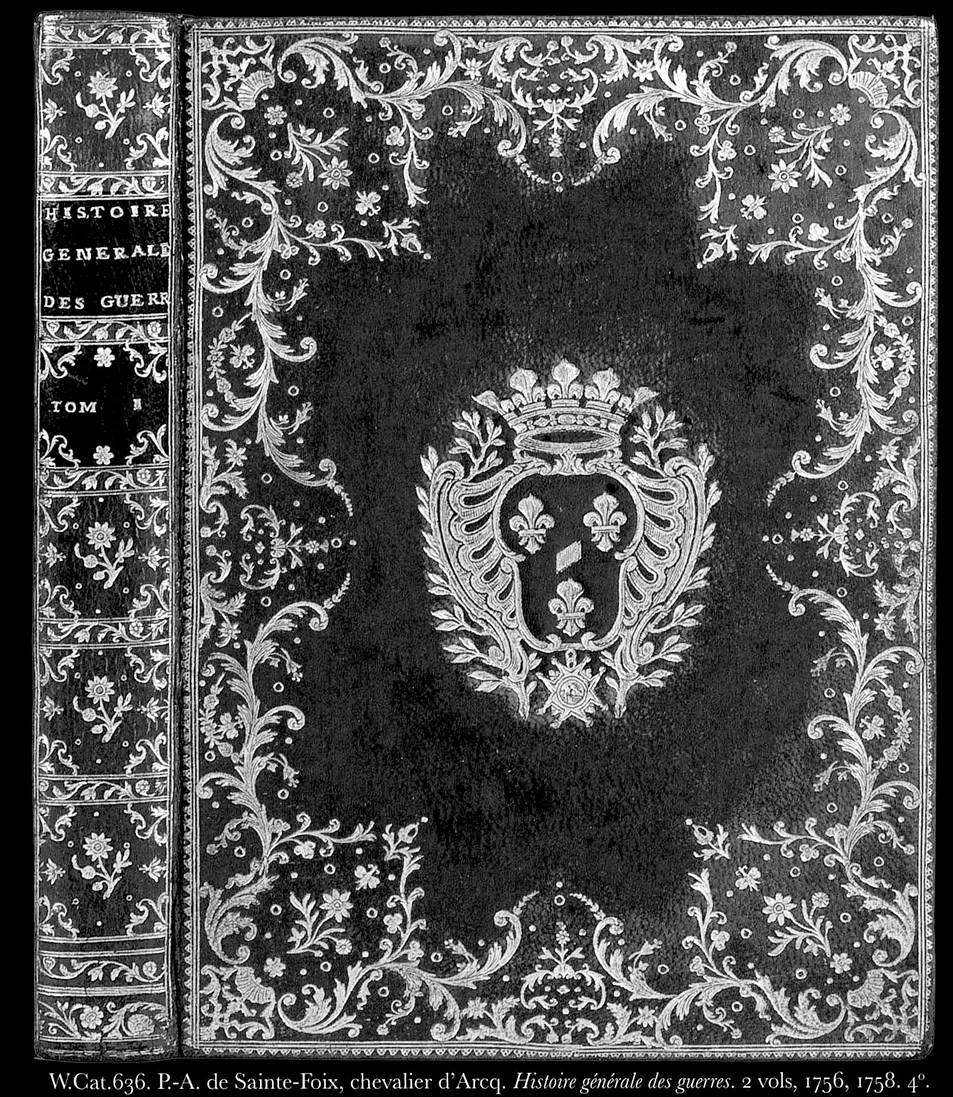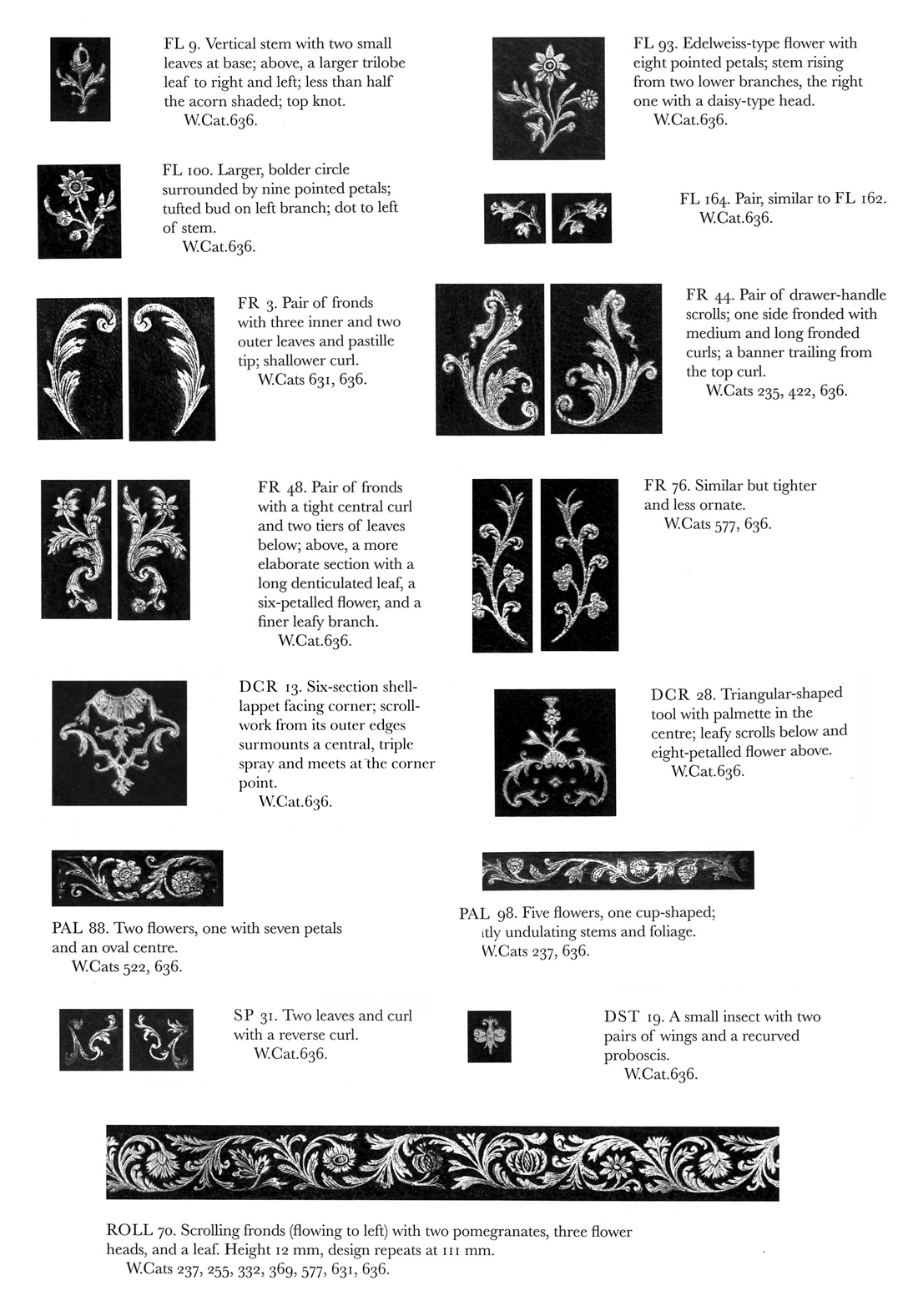|
Barber has examined probably thousands of bindings and extracted and catalogued the imprints from those which he considered most important, one would think that after such a gargantuan exercise he would have become well versed in the tools of the more important French decorative bookbinders of the 18th century. However in this binding W.Cat. 636 he ran into some serious problems. In the end he attributed the binding to Louis Douceur even though there is not a single Douceur tool in evidence unless we are to consider the inner dentelle which appears to be one of Douceur's roulettes, I did not check this roulette, ROLL 70, as we now know that some of the tools are those of René-François Fétil, perhaps all are. As we saw on a previous page Fetil was mixing Douseur tools with his own, perhaps he was employed by Douceur as he entered into retirement. This may explain the mix of tools seen in this decoration. However Douceur employed some very specific tools, and the tools we see here are not the standard tools of Douceur but hybrid tools made in the fashion of Douceur's tools. Barber's mistake was to lump all these non Douceur tools into the Douceur collection, and this binding W.Cat. 636 appears to be the source of some dramaticly obvious errors. Future work will entail looking at the bindings to which some of the tools appear to be related... W.Cats 235, 237, 422, 522, 577, 631, as well as others that may actually be bindings that have been executed by René-François Fétil. One should always recognize the brave efforts of a brilliant fellow researcher, Barber's contribution to the cataloguing of the French decorative tools of the 18th century stands as monument in the midst of a desert of the unknown.
|



